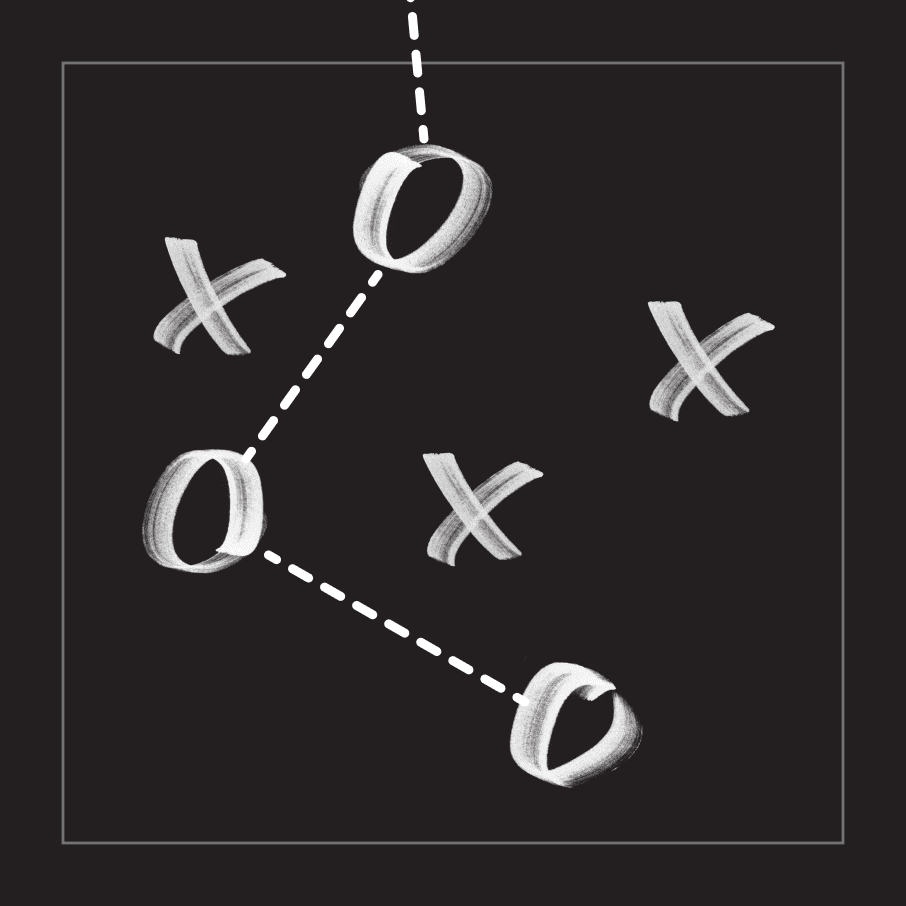Remember the last time you made a purchase at the grocery store and opted for a product from one brand instead of another? Why would you choose one over the other? Why would you buy Pepsi but not Coke or vice versa?
It is likely that you prefer one brand over another because of how you feel about that brand. Our emotions decide how we perceive a brand and whether we will opt for its products or services.
According to a 2022 study by Salesforce, 62% of consumers say they are emotionally invested in the brands they buy. Brands like Apple, Tesla, and Nike have legions of loyal customers because they are emotionally connected to these brands.
Emotions can impact our perception of any experience, and the relationship between brands and consumers is no different from the relationship between people. To manage a brand’s perception, it is critical to have your audience emotionally involved with your brand’s vision and mission. It is probably why Tesla fans overlook Elon Musk’s douche behaviour and still rage about the Tesla cars all over the internet.
In short, understanding, measuring, analyzing and improving brand perception is critical for businesses. Here is everything that we will discuss about Brand Perception in this blog:
- What is brand perception?
- What is an example of brand perception?
- What are the factors that impact brand perception?
- What is brand equity & how it relates to brand perception?
- Why measure brand perception?
- How to measure brand perception?
- Brand Perception Survey Questionnaire [Template]
- How to code responses in a brand perception survey?
- Conclusion on brand perception
What is brand perception?
Brand perception is what the customers of a company believe about a product or service and how it makes them feel. It’s not what the company owning the brand says it does. Brand perception is a measure of how strongly a customer feels about a brand. It is colloquially also known as the “image” of the brand.
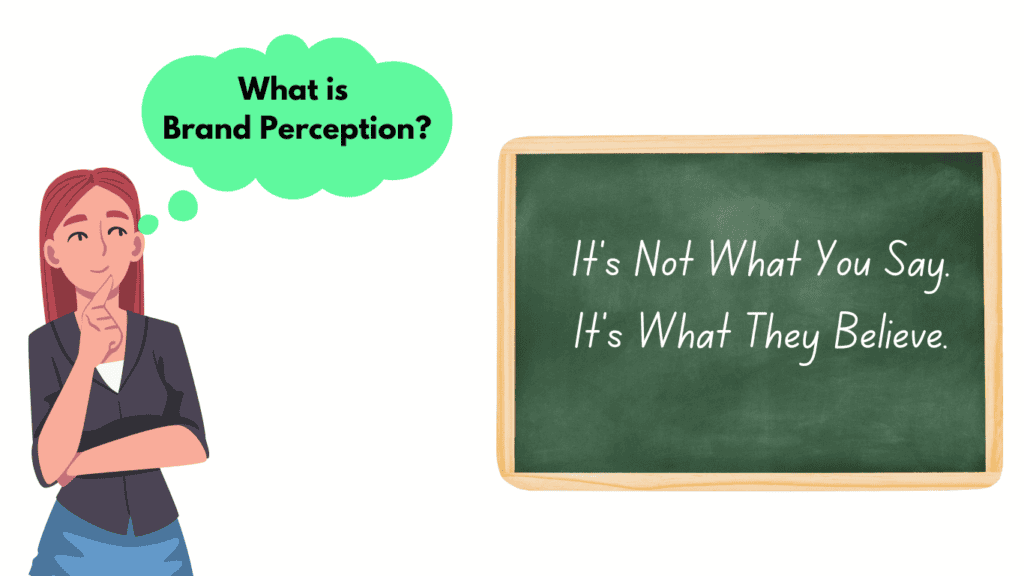
Big brands splurge millions of dollars to develop their corporate brands to improve their brand perception and recognition in the market. Pepsi paid a whopping one million dollars to redesign its logo in 2009.
What is an example of brand perception?
One way to understand brand perception is to examine how Apple operates and thrives in the consumer electronics market. Even if you are a die-hard Android fan, you’d agree with the mass appeal of the Apple brand. Apple’s brand is perceived as a company that produces high-quality, extremely well-designed, reliable and intuitive consumer electronics. This isn’t something Apple needs to shout from the rooftops; it is visible when people line up to buy the next Apple product.
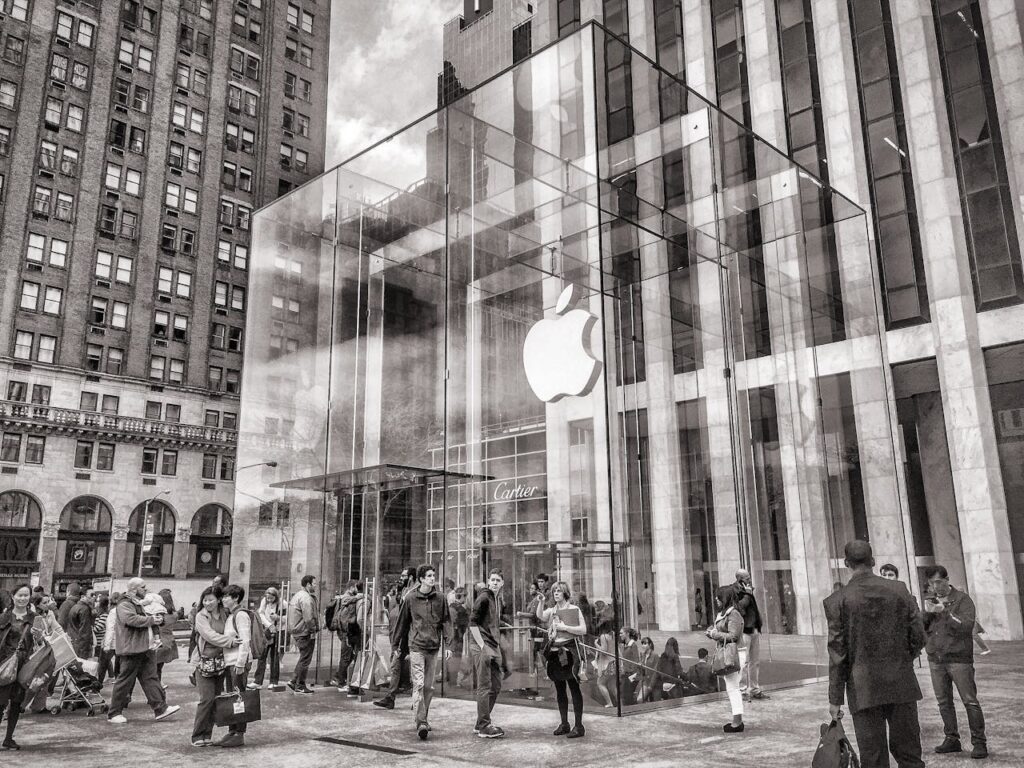
Image Courtesy: Pixabay from Pexels
What are the factors that impact brand perception?
A brand’s image develops over time and depends on many attributes of a brand. The most crucial factor is the product or service that your brand provides.
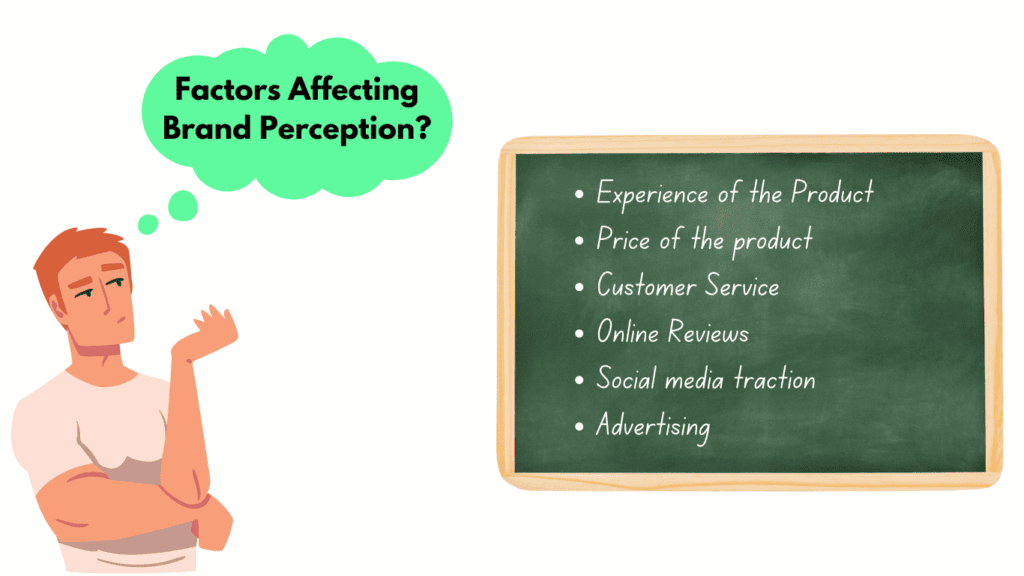
Apple wouldn’t have become the world’s most valuable brand if the iPhone were a mediocre product. The major factors that impact a brand’s perception are:
- The product/service on offer
- Price of the Product/Service
- Customer service
- Online reviews
- Word of mouth
- Social media traction
- Advertising
- Brand Platforms (Websites, Mobile Apps etc.)
Any touchpoint customers have with a brand can impact how a brand is perceived. That is why all of them need to be on brand and in sync with the goals of the business.
What is brand equity & how it relates to brand perception?
Brand perception changes from customer to customer. Not all customers will have the same image of a brand. The cumulative perception or opinions about a brand amongst all of its customers is called brand equity. Consumer perception of a brand decides how much brand equity they have in the market. For example, many high-end Android phones are comparable to an equivalent iPhone. But an iPhone always sells for a premium price because of Apple’s insane positive brand equity in the consumer electronics market.
Why measure brand perception?
The main goal of measuring brand perception is to improve a brand’s value and equity. Many departments within a company can improve their performance once they know how their brand is perceived in the marketplace.
For example, the customer service department of a local hardware store like Home Depot can improve its performance after conducting a customer service survey. You must have seen these surveys on the receipt of your Home Depot bill.
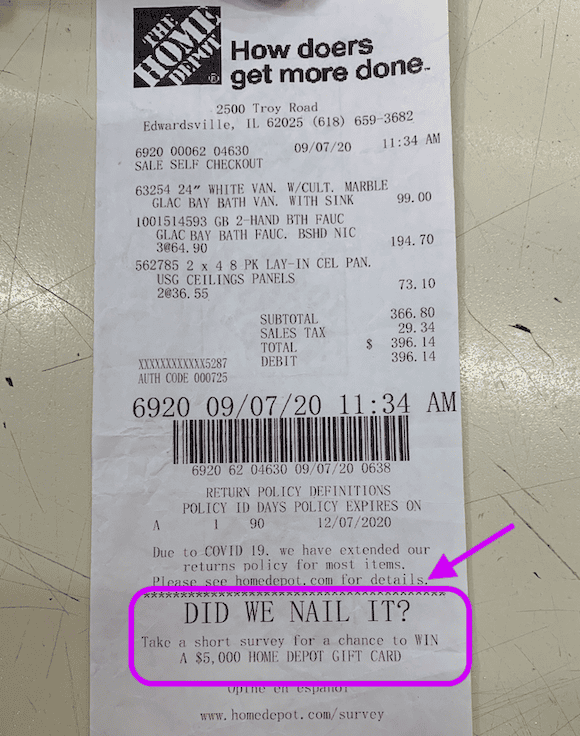
Image Courtesy: Reddit
The most important branding & marketing mantra is to listen to your customers. Brand perception measurement helps in understanding what your customers actually think about your brand.
How to measure brand perception?
Measuring brand perception is a critical step in managing and improving your brand performance. There are many ways to determine brand perception:
- Brand Perception Surveys
- Brand Focus Groups/Interviews
- Online reviews
- Social media monitoring/listening
Brand Perception Surveys
Brand perception surveys help investigate how people perceive and interact with a brand. They provide insights into customer sentiments, attitudes, and beliefs that influence a brand’s reputation. The simplest example of a brand perception survey is the surveys big box retailers have on their purchase receipts. These are typical NPS (Net Promoter Score) surveys that gauge customer experience at these stores.
Key objectives of a brand perception survey or study will include assessing the following:
- Brand Awareness: Evaluating how familiar consumers are with the brand and its offerings.
- Brand Associations: Identifying the attributes and characteristics that consumers associate with the brand.
- Brand Image: Understanding the overall perception of the brand and how it is positioned in the minds of consumers.
- Brand Equity: Evaluating the value and strength of the brand in the marketplace.
- Competitive Analysis: Comparing the brand’s perception to its competitors to identify strengths and weaknesses.
- Customer Satisfaction: Gauging how satisfied customers are with their experiences with the brand.
- Purchase Intent: Determining the likelihood of consumers choosing the brand over competitors in the future.
Brand Focus Groups
Focus groups are one of the old-school methods of doing branding and marketing research. The setting is fairly simple and involves getting a bunch of your customers (usually 8-10) into a room and getting their feedback and opinion about the brand.
The success of a brand focus group relies on ensuring a healthy conversation between the participants and the quality of the questions asked in the discussion. A focus group will help you gain qualitative feedback about a brand and will help you understand what your target audience thinks about your brand.
Online Reviews
One of the most straightforward ways to understand the perception of a brand is to look at its online reviews on platforms such as Google & Facebook. The best way to find insights from online reviews is to collate all the reviews from different platforms into a single Google sheet. Run this data through ChatGPT to analyze customer sentiments, emerging themes and patterns about your brand. Be careful, as ChatGPT and other generative AI software can hallucinate and provide wrong information.
Social Listening
Social listening is another impactful way to understand brand perception. What people are saying about your brand on social media platforms like Facebook, Instagram, TikTok, Twitter, Reddit etc., is critical in developing an understanding of a brand’s perception in the marketplace. Social listening can be done through a wide variety of tools like Radian 6, Sprout Social, Brand Watch etc. Listen to what people are saying about your and your competition brands.
Brand Perception Survey Questionnaire [Template]
To help you get started on conducting brand perception studies on your own, we are sharing a sample brand perception survey questionnaire template. Please note that this is a sample survey to help you design a brand perception survey. The questions in the survey below are indicative and will change based on the goal and requirement of the survey. Let’s go and dive into the deep end.
Brand Association Questions
- When you think of [brand-name], what comes to mind first? [Open-Ended Question]
- Which of the following words describe [brand-name]: [Closed]
- Strategic
- Creative
- Innovative
- Collaborative
- Results-driven
- Value-driven
- What kind of feelings do you experience when you think of [brand-name]? [Open-Ended]
- When you think of [brand-name], how do you feel? [Closed]
- Satisfied
- Trusting
- Engaged
- Connected
- Loyal
Brand Differentiation Question
- When you think of [companies in your niche], which brand comes to mind first? [Open Ended]
- What do you think is [brand-name]’s USP? [Open Ended]
- In what ways do you find [brand-name] brand unique or different? [Open-Ended]
Brand Experience Questions
- How would you describe your last experience with [brand-name]? [Open Ended]
- On a scale of 1-10, how likely are you to recommend [brand-name] to a friend or colleague? [Closed]
Sidenote: Questions about the Brand experience or Customer feedback are usually designed using a Likert scale. A Likert Scale is more suitable for these survey questions as it helps analyze trends in your survey data. For example, see how HubSpot uses Likert Scale to design their customer experience surveys.
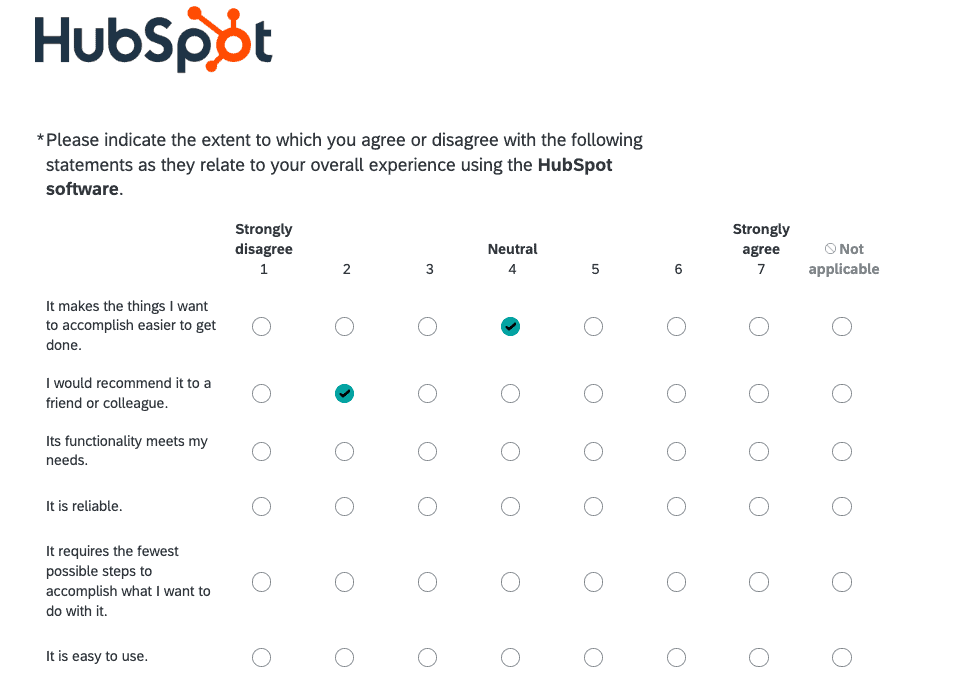
Brand Perception Drivers
- What aspects of our brand messaging or communication resonate with you the most? [Open Ended]
- Which of our brand touchpoints (website, social media, customer service, etc.) do you find most effective and engaging? [Closed]
How to code responses in a brand perception survey?
Once you design a brand perception survey, the next step is to learn how to code the responses. Even if you are doing a qualitative survey, coding the answers help you glean insights that may get overlooked if done manually. Here are a few examples of how to code the responses from the survey.
Question: When you think of [brand-name], what comes to mind first?
How to code: Identify common keywords or phrases that respondents mention most frequently.
Question: Which of the following words describe [brand-name]?
How to code: Assign a numerical value (e.g., 1 for selected, 0 for not selected) to each word option and calculate the total for each word to determine the most commonly chosen descriptors associated with [brand-name].
Question: What kind of feelings do you experience when you think of [brand-name]?
How to code: Identify and categorize the emotional responses mentioned by respondents into common themes or sentiments (e.g., positive emotions, trust, excitement, etc.).
Question: When you think of [brand-name], what comes to mind first?
How to code: Assign a numerical value (e.g., 1 for selected, 0 for not selected) to each feeling option and calculate the total for each feeling to determine the most commonly chosen emotions associated with [brand-name].
The Verdict
Brand perception studies and surveys are great tools for understanding what your brand means to your customers. They help gain valuable feedback from the people that matter most to an organization, i.e. its customers. A brand perception study will help determine areas for improvement. It will help align your marketing efforts and improve how customers “experience” your brand and will ultimately drive business growth.
If all of this information feels overwhelming, its never late to call the experts 😉
